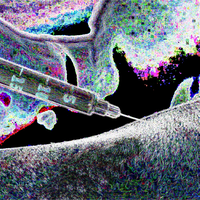| Tyr | |
|---|---|
| Molecular structure via molpic based on CDK |
| Physical properties [] | |
|---|---|
| Molecular mass | 181.19 g/mol [1] |
| Predicted LogP | -2.3 [1] |
| Structural Identifiers [] | |
|---|---|
| Molecular formula | C9H11NO3 [1] |
| IUPAC name | 2-amino-3-(4-hydroxyphenyl)propanoic acid [1] |
| SMILES | C1=CC(=CC=C1CC(C(=O)O)N)O [1] |
| InChI | InChI=1S/C9H11NO3/c10-8(9(12)13)5-6-1-3-7(11)4-2-6/h1-4,8,11H,5,10H2,(H,12,13) [1] |
| InChIKey | OUYCCCASQSFEME-UHFFFAOYSA-N [1] |
| Dosing[] |
|---|
| Oral [] | |
|---|---|
| Threshold | 0.25 - 1.55 |
| Light | 1.55 - 375.75 |
| Common | 375.75 - 500 |
| Strong | 500 - 1000 |
| Heavy | 1000 - 1500 |
Statistically derived dosages via DBI-IGS We do not take any responsibility for medical complications or loss of life sustained by following these dosages blindly. |
Tyrosine
(Redirected from l-tyrosine)Tyrosine (also known as DL-Tyrosine, AI3-18479, 2-azaniumyl-3-(4-hydroxyphenyl)propanoate, 209-113-1, H-DL-Tyr-OH, tyrosin, (.+-.)-Tyrosine, Dl-tyrosine-β-13c, DL-4-Hydroxyphenylalanine-15N or L-Tryosine) is a
Chemistry
Salts []
Tyrosine is typically found in the form of its disodium dihydrate salt.
Stereochemistry []
DL-Tyrosine is a racemic mixture of the logical stereoisomers
| Anodyne Usernotes [] | |
|---|---|
| 0xea / Tyrosine via Oral |
|
 Anodyne
Anodyne